Dracaena care and growing guide: how to grow a dragon tree
Keep your dracaena looking great all year round with our essential care tips for the dragon tree indoor plant


Dracaena are one of the top indoor plants for beginners. Also known as the dragon tree, these plants are loved for their fountains of colorful foliage and their ability to sail through periods of neglect. In their native Africa and islands of the Indian Ocean, these graceful plants reach tree-like proportions, and even as houseplants they can easily grow to 4–5 feet (1.2–1.5m) in height, their sturdy stems and striped leaves creating a sculptural feature in a bright room.
The most popular forms are cultivars of Dracaena fragrans, also known as the corn plant, such as ‘Lemon Lime’, with its broad dark green, lime and yellow striped leaves, and ‘Massangeana’, which produces pale and dark green foliage. The Madagascar dragon tree (Dracaena marginata) is another favorite, its slim, spiky foliage lending it a palm-like appearance – look out for ‘Tricolor’, a beautiful colorful form with red-edged leaves.
Dracaena reflexa (syn Pleomele reflexa) ‘Song of India’ is another beautiful plant, its sprays of bright yellow and green leaves creating a striking feature.
Although these are one of the best indoor plants they rarely flower, but will instead offer a leafy ambience in any home. They are perfect if you’re looking for a little natural color but have no time for pampering.
3 top tips for dracaena plant care
In order for your dragon tree to thrive there are a few key pieces of advice for dracaena plant care. From getting the right light conditions in your indoor garden to checking regularly for pests, keeping your plant healthy is all about knowing its specific needs.
1. Get the lighting balance right
Dragon plants and trees all need some sunlight to maintain their beautiful colors, but too much may scorch the foliage. To achieve this happy medium, set your plants on the floor or a tabletop in a bright room away from the window. Also avoid areas close to radiators, which will dry out the foliage.
If your room faces north, look out for plants with dark green leaves, such as the Madagascar dragon tree, which you could set closer to the window, since it will never receive direct sun. Unlike some houseplants like aloe vera, Dracaena will not be happy outside in summer, preferring the warmer conditions day and night indoors.
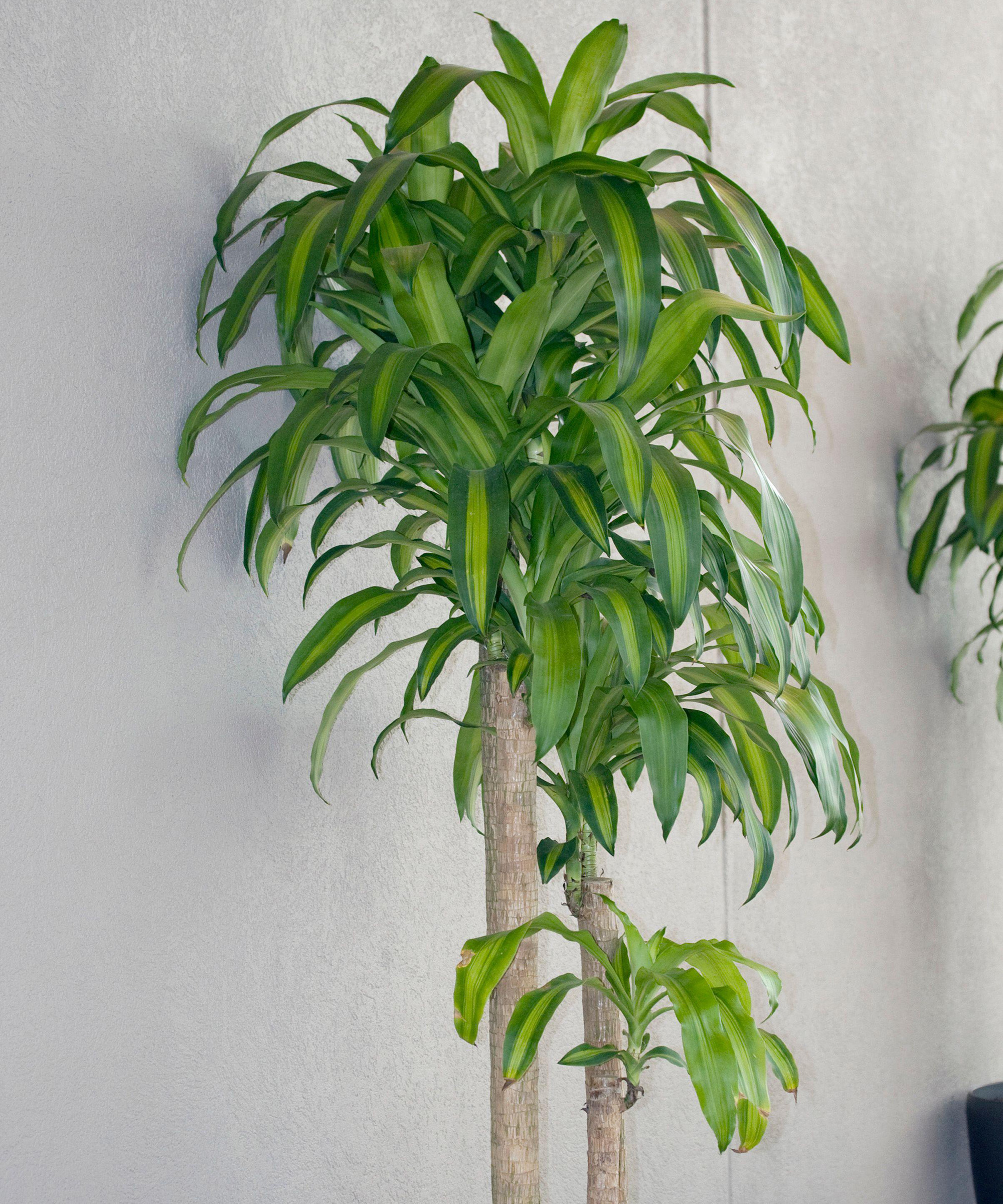
2. Manage the water and feed
Dragon tree plants will thrive if you keep their compost moist during the growing season from spring to fall, watering when the top of the compost feels almost dry. In winter, reduce watering so that the compost is just moist.
Make sure your plant is in a pot with drainage holes at the bottom, like you would with other house plants such as a peace lily. And either water it over a sink and leave it to drain before slipping it back into a waterproof container or, if your plant is too big to do this, place it on a deep waterproof saucer that will catch the excess moisture as it drains out. These watering methods will prevent the compost from becoming waterlogged which may lead to the plant rotting.
Dragon plants like some humidity, so mist the leaves every week or set the plant in its pot on a shallow tray filled with pebbles and topped up with water.
For healthy growth, feed your plant with a half-strength balanced liquid fertilizer once a fortnight from spring to fall.
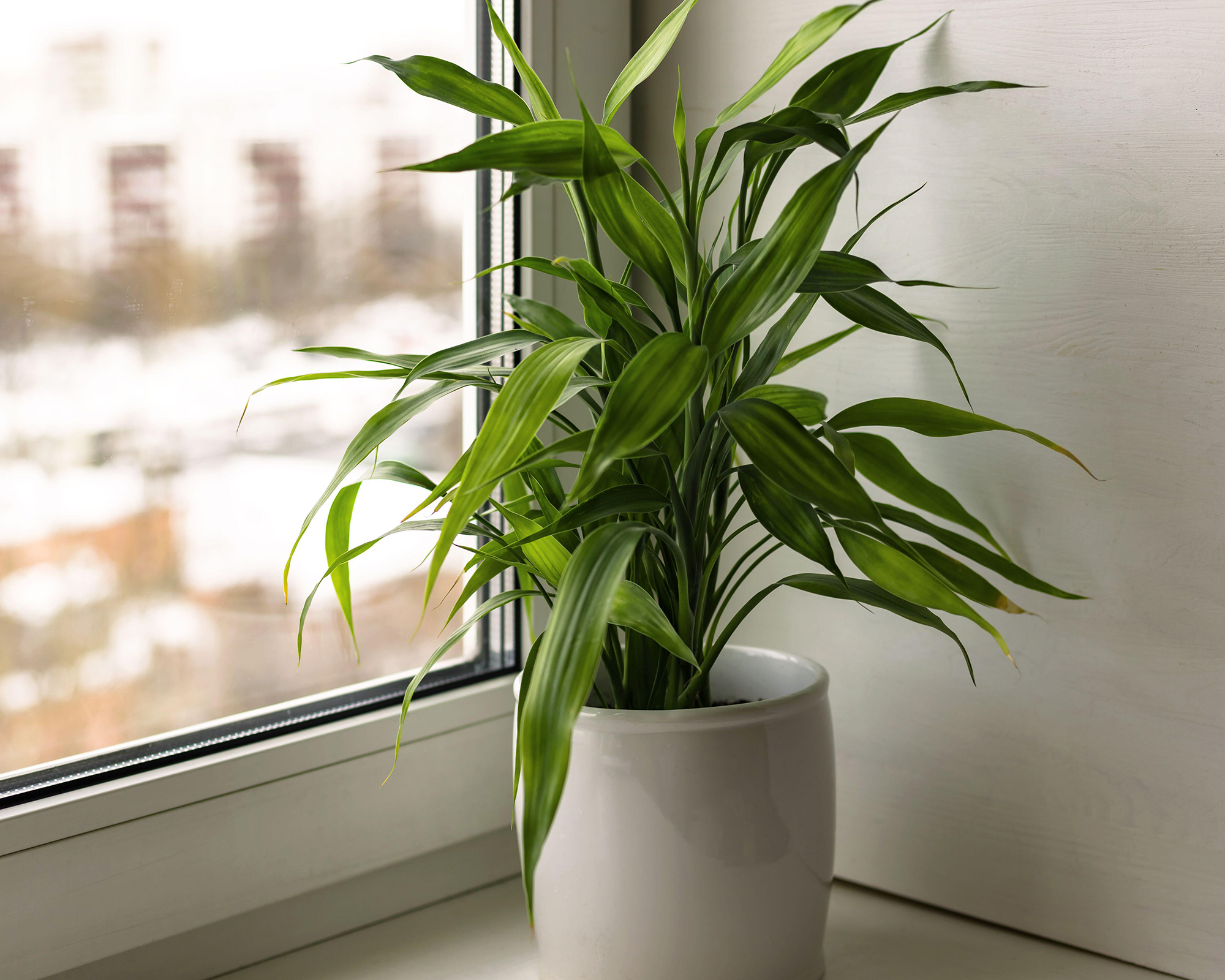
3. Check plant health regularly
Checking plants regularly and removing leaves promptly that show signs of pest damage will keep most problems at bay. Pests most likely to infect a dragon plant include red spider mite, thrips and scale insects, which will cause discolored or distorted leaves.
The best method for how to get rid of thrips is to shake the plant so they will fall off. They can be controlled with blue sticky traps suspended above the foliage – these insects rarely do severe damage so don’t worry too much if your plant succumbs to them. You can use a biological control, to remove red spider mite but few other methods work, so you may have to discard a severely infected plant.
If you see scaly or shell-like bumps on the stems and leaves, sap-sucking scale insects are to blame. These can be controlled by dipping a small paintbrush into diluted methylated spirits and dabbing it on these pests. Remove severely infested plants.
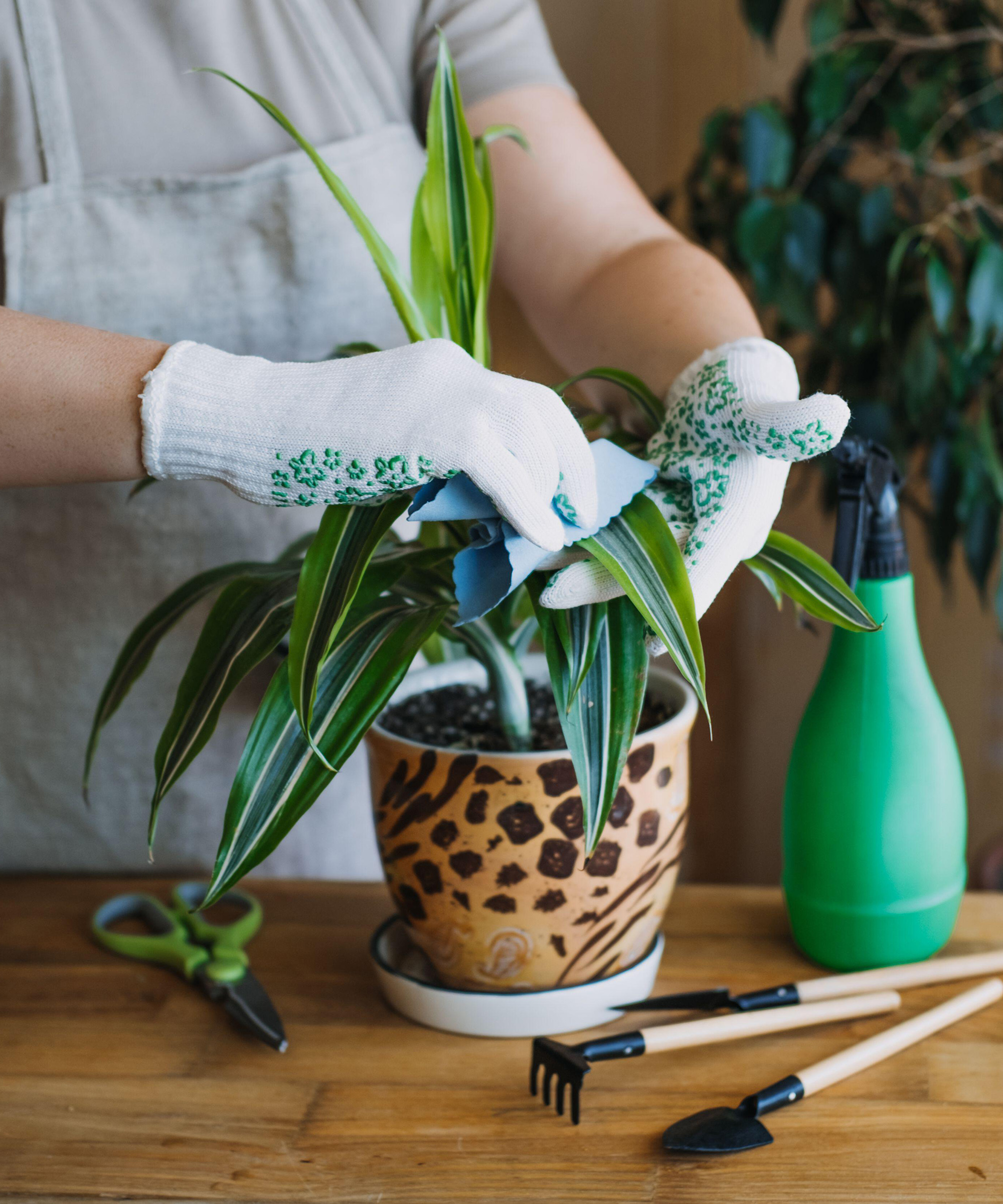
Key problems with dracaena plants
Irregular watering and low humidity levels may lead to brown leaf tips on dragon plants. This can occur if the plant is too close to a radiator or a sunny window, which will dry out the foliage, or if it is suffering from an extended period of drought. Remedy the problem by watering your plant, as described above, and misting the leaves regularly. Wiping dust from the foliage will also allow it to absorb light more effectively.
Like with elephant ear plants the leaves of dracaena may also wilt or discolor if you overwater them, so ensure your pot has drainage in the base, and never allow the plant to sit in waterlogged compost.
Dragon plants rarely succumb to disease, but they may develop the fungal disease leaf spot if overwatered, which results in reddish or light brown spots surrounded by a yellow halo on the foliage. If you see these marks, remove the infected leaves, reduce watering and try to keep the leaves dry when you next irrigate the plant.
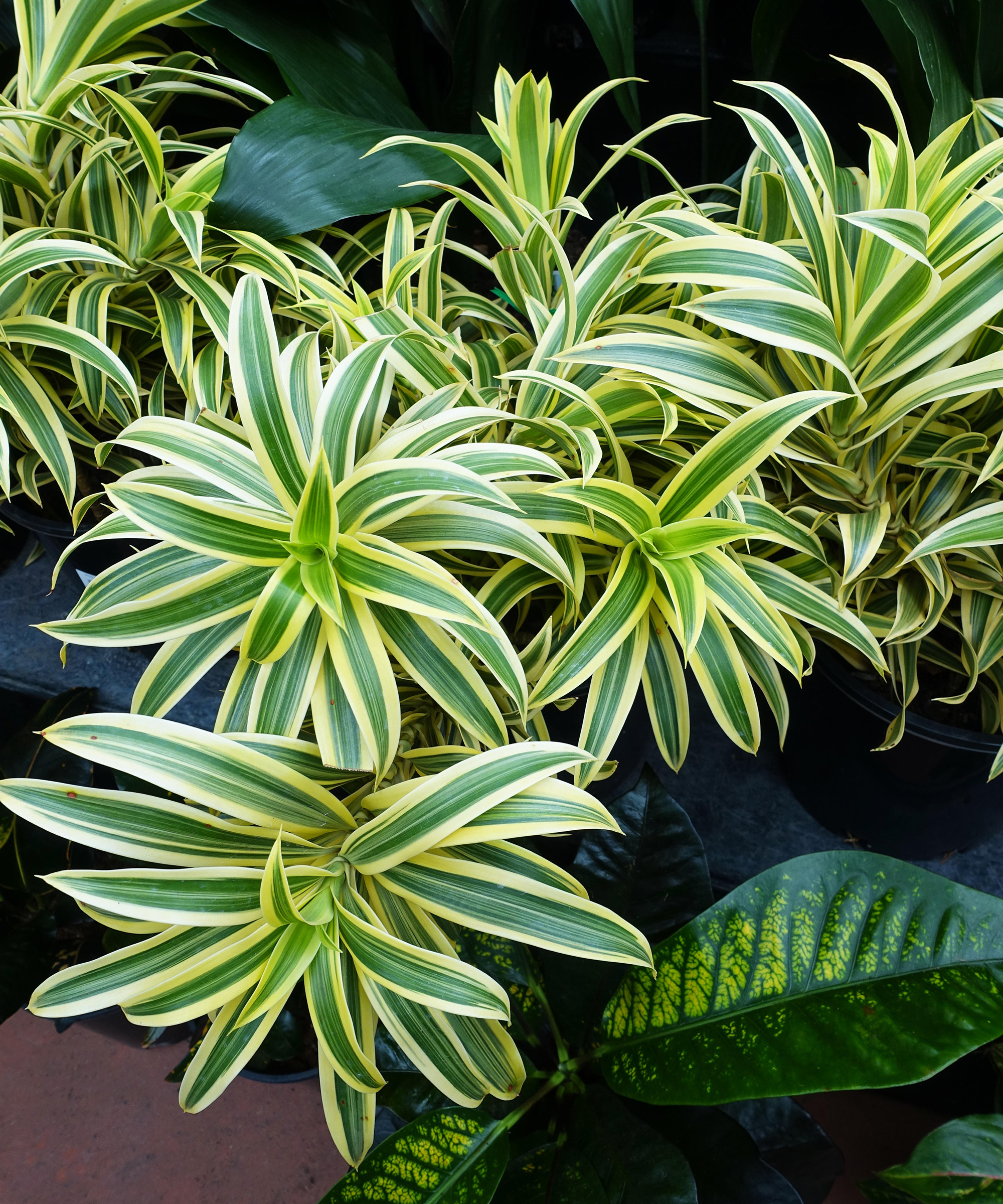
Do dracaena plants purify air?
Research by NASA showed that the dragon plant was one of the best in helping to purify the air of polluting chemicals such as benzene and formaldehyde, but more recent studies have found that you would need a forest of these air purifying plants to make a significant different to the levels in your home.
However, new research has shown that plants’ ability to regulate humidity levels in the home can help to suppress air-borne microbes, including molds and bacteria, by as much as 50 per cent. They also improve our mental wellbeing, so there are still many good reasons to add everything from kitchen plants to low light indoor plants to your interior.
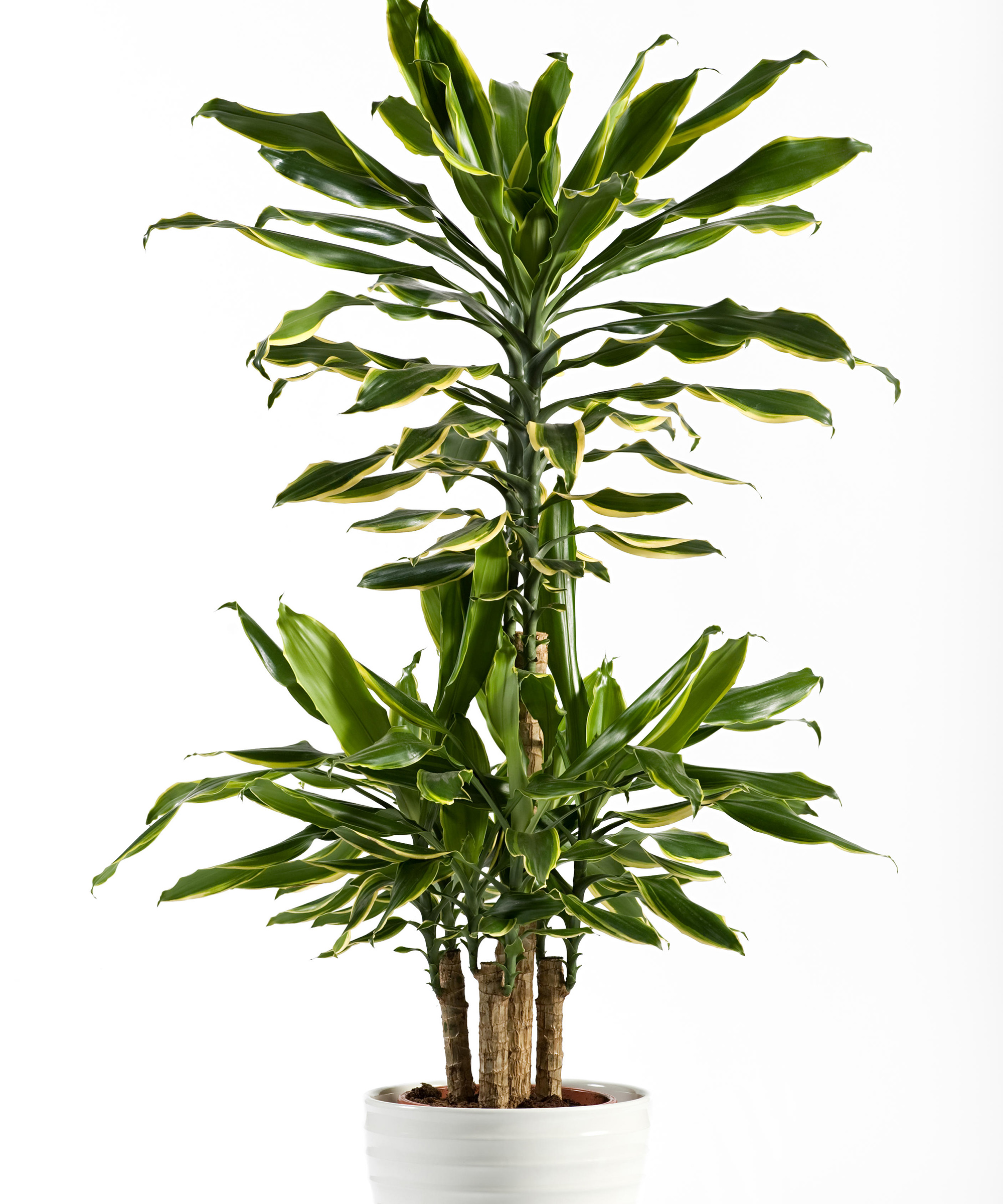
Is a dragon plant good for a bedroom?
A dragon plant or tree can be one of the best plants for bedrooms, providing your space offers suitable light conditions. These leafy lovelies prefer a bright room, but like a position away from the window, where direct sun may scorch their leaves.
While they need some humidity to thrive, they don’t require very high levels so there's no need to keep them as plants for bathrooms. A bedroom would provide a good home if you’re prepared to mist the leaves now and then, or set your plant on a tray of damp pebbles.
Just remember that all parts of the Dracaena family of plants are toxic for pets, so they are not a good choice if you have a puppy or cat that’s at the chewing stage.
You can get up to speed with other poisonous plants for dogs and plants that poisonous to cats in our dedicated guides.
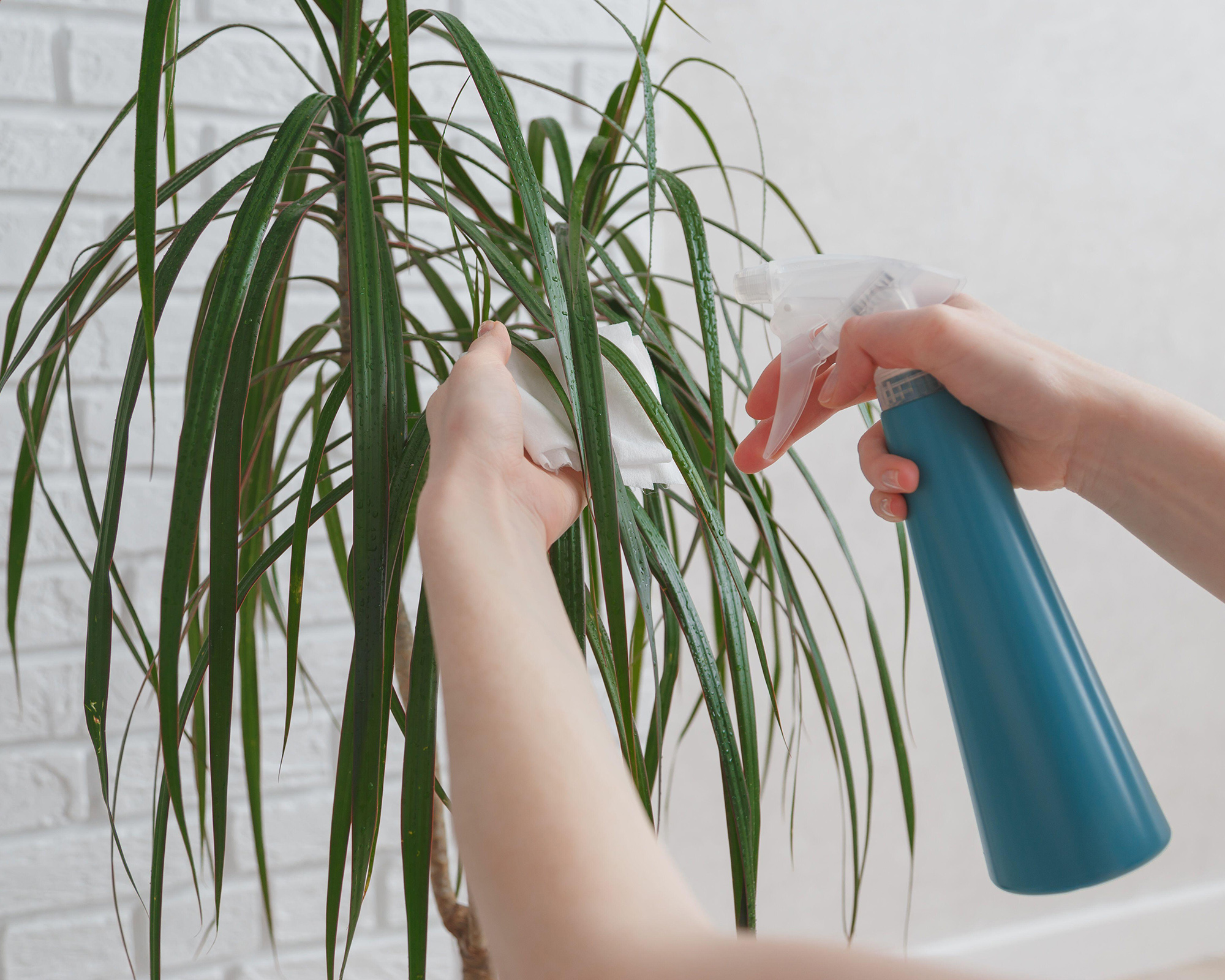
What are the benefits of a dracaena plants?
One of the main benefits of dracaena plants is that they are low maintenance indoor plants which require very little care. The dragon tree in particular needs nothing more than regular watering during its growth period and a little fertilizer – it will survive short periods of drought, too, although the leaf tips may turn brown if left for too long without water.
These woody stemmed plants also inject height and structure into your indoor plant ideas and are widely available from DIY stores, as well as from garden centers and online nurseries.
Where to buy dracaena plants
Ready to add one of these favorites to your interior? Use our quicklinks below to start your plant shopping.
Shop dracaena plants in the US:
- Shop dracaena indoor plants at Amazon
- Shop dracaena indoor plants at Lowes
- Shop dracaena indoor plants at Walmart
Shop dracaena plants in the UK:

Zia Allaway is a garden book author, editor, and journalist, and writes for a range of gardening and women’s magazines, including Easy Gardens, Homes & Gardens and Livingetc, as well as The Guardian and The Daily Telegraph newspapers. She has also written books for the Royal Horticultural Society and Dorling Kindersley publishers, including Eco-Gardening, Compost, Low Maintenance, Practical House Plant Book, Practical Cactus & Succulent Book, Indoor Edible Garden, What Plant Where, and the Encyclopedia of Plants and Flowers.
